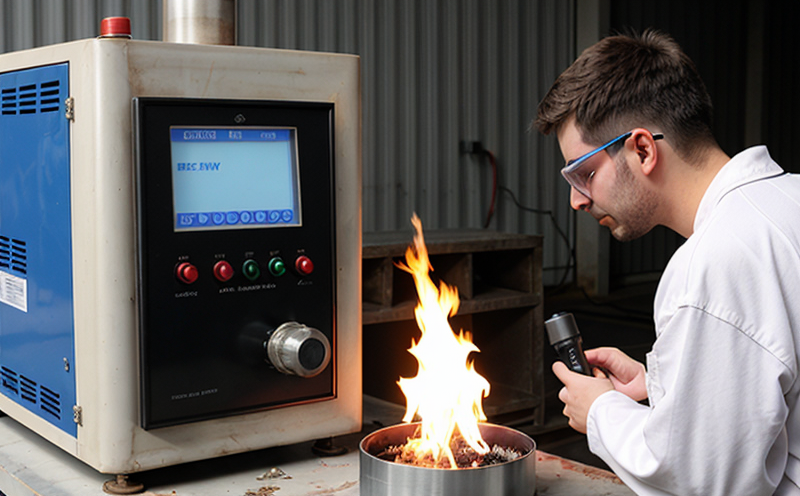DIN EN 15316-2 Heating System Thermal Output
The DIN EN 15316-2 standard is a critical component in the evaluation of heating systems, particularly focusing on their thermal output. This test ensures that heating systems meet the required performance levels as specified by the standard. It is essential for quality assurance and compliance with international norms.
The DIN EN 15316-2 specifies methodologies to determine the thermal output of a central heating system. The process involves measuring the heat production under controlled conditions, ensuring that the test results are reliable and reproducible. This testing protocol covers various aspects such as the operation mode, temperature control, and energy efficiency.
The primary goal is to ensure that the heating system can deliver the expected thermal output without compromising on safety or performance. Compliance with this standard is vital for manufacturers aiming to meet market demands and regulatory requirements. It also helps in maintaining consistent product quality across different batches and production runs.
Compliance with DIN EN 15316-2 involves several key steps:
- Setting up the test environment according to specified conditions.
- Calibrating measurement instruments accurately.
- Operating the heating system under controlled parameters.
- Recording and analyzing the thermal output data.
The importance of this test cannot be overstated, especially in sectors reliant on efficient heating systems such as residential construction, commercial buildings, and industrial plants. By adhering to DIN EN 15316-2, manufacturers can ensure that their products meet stringent quality standards, enhancing customer satisfaction and trust.
In summary, the DIN EN 15316-2 is a vital tool for ensuring reliable heating systems. It offers a standardized approach to measuring thermal output, which is essential for maintaining product quality and compliance with international norms.
Why It Matters
The importance of the DIN EN 15316-2 standard in HVAC equipment testing cannot be overstated. This test ensures that heating systems perform as expected, delivering the desired thermal output efficiently and reliably. Here’s why this matter:
- Enhanced Safety: Ensuring the system operates within safe parameters prevents potential hazards.
- Improved Efficiency: Accurate measurement helps in optimizing energy usage, reducing costs for consumers.
- Consistent Quality: Standardized testing ensures that all systems meet the same high standards.
- Regulatory Compliance: Meeting international standards is crucial for market access and compliance.
The impact of this standard extends beyond individual products. It contributes to sustainable development by promoting efficient resource use, thereby reducing environmental footprint.
In conclusion, the DIN EN 15316-2 test plays a pivotal role in maintaining high standards of heating system performance. Its application ensures that consumers receive reliable and safe products, contributing significantly to overall quality management.
Benefits
- Enhanced Reliability: The standard guarantees consistent performance across different batches and production runs.
- Better Compliance: Ensures that the heating systems meet international standards, facilitating market entry.
- Increased Efficiency: By optimizing energy usage, it helps reduce operational costs for businesses.
- Improved Safety: The test ensures that all systems operate within safe parameters, reducing risks.
The benefits of adhering to DIN EN 15316-2 extend beyond the immediate product. It fosters a culture of quality and reliability, which is essential for long-term success in the HVAC sector.
Additionally, compliance with this standard can enhance brand reputation by demonstrating commitment to high standards and customer satisfaction. This, in turn, can lead to increased market share and better business performance.
Quality and Reliability Assurance
The quality assurance measures associated with DIN EN 15316-2 are designed to ensure that heating systems meet the highest standards of reliability and efficiency. These measures include:
- Calibration: Regular calibration of measurement instruments ensures accurate data collection.
- Data Analysis: Thorough analysis of test results helps in identifying any discrepancies or areas for improvement.
- Documentation: Maintaining detailed records of tests and findings supports traceability and accountability.
The use of advanced instrumentation and rigorous testing protocols further reinforces the reliability of the results. Compliance with international standards such as ISO, EN, ASTM, and IEC ensures that the test methods are consistent and reliable across different regions and laboratories.
By implementing these quality assurance measures, laboratories can provide clients with confidence in their test results. This not only enhances client trust but also promotes a positive reputation for both the laboratory and its clients.





